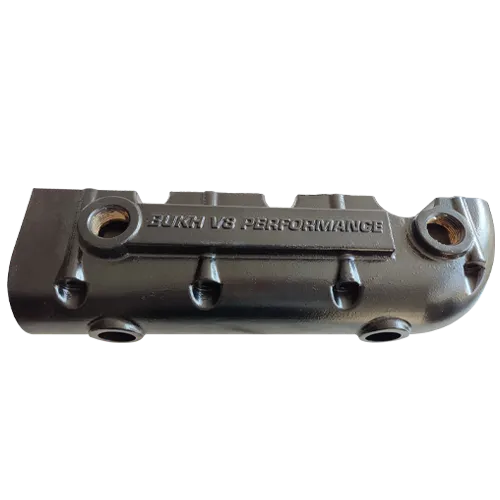Mobile:+86-311-808-126-83
Email:info@ydcastings.com
types of metal casting processes
Types of Metal Casting Processes
Metal casting is one of the oldest manufacturing processes that transforms molten metal into solid forms, allowing for the creation of intricate shapes and designs. This process serves a wide range of industries, from automotive to aerospace, due to its versatility and efficiency. In this article, we will explore the various types of metal casting processes, highlighting their characteristics, advantages, and applications.
1. Sand Casting
Sand casting is perhaps the most widely used metal casting process. It involves creating a mold from sand, which can easily be shaped and reused. The process typically includes creating a pattern (the object to be cast), packing sand around it to form a mold, and then pouring molten metal into the mold cavity. Once the metal has cooled and solidified, the sand mold is broken to remove the casting.
Advantages Sand casting is relatively inexpensive, accommodates large castings, and allows for the use of a variety of metals. Additionally, it can produce complex shapes and is adaptable to small production runs.
Applications This method is commonly used in manufacturing automotive engine blocks, frames, and various industrial components.
2. Investment Casting
Investment casting, also known as lost-wax casting, involves creating a wax pattern that is coated with a ceramic material. Once the coating hardens, the wax is melted away, leaving a hollow mold. Molten metal is then poured into this mold. This method is renowned for its ability to produce highly accurate and detailed castings.
Advantages Investment casting produces a superior surface finish and is ideal for intricate designs. It also allows for the casting of complicated geometries and reduces the need for extensive machining.
Applications It is widely used in the aerospace and medical industries for producing precision parts, turbine blades, and complex components.
3. Die Casting
Die casting is a high-speed production process where molten metal is injected into a metal mold (die) under high pressure. This method allows for rapid production of large quantities of castings with a high degree of accuracy.
types of metal casting processes

Advantages Die casting offers the ability to create thin-walled sections and holds tight tolerances. It also provides excellent surface finishes, which often require little to no additional machining.
Applications This process is commonly utilized for manufacturing components in the automotive, electronics, and consumer goods industries, such as gears, housings, and intricate parts.
4. Permanent Mold Casting
Permanent mold casting involves pouring molten metal into reusable metal molds. The molds are typically made from materials like steel or iron and can withstand multiple uses. This method allows for better control over cooling and solidification, resulting in improved mechanical properties.
Advantages Permanent mold casting produces castings with smoother surfaces, finer detail, and superior mechanical properties compared to sand casting.
Applications It is frequently used for non-ferrous metals in the production of automotive parts and components that require durability, such as water and oil pumps.
5. Centrifugal Casting
Centrifugal casting utilizes centrifugal force to distribute molten metal into a rotating mold. This process is particularly useful for producing cylindrical parts. As the mold spins, the metal is forced against the mold walls, resulting in a denser and stronger casting.
Advantages Centrifugal casting is ideal for creating parts with a uniform structure and high strength. It also minimizes the occurrence of defects like porosity.
Applications This technique is often used for manufacturing pipes, tubes, and other cylindrical components in industries such as oil and gas, plumbing, and transportation.
Conclusion
Metal casting processes are essential for various manufacturing applications, each offering unique advantages and capabilities. From the simplicity of sand casting to the precision of investment casting, these methods allow industries to produce a wide array of components with varying specifications and requirements. As technology advances, casting methods continue to evolve, promising even more innovative solutions for complex manufacturing challenges. Understanding these processes is crucial for engineers and manufacturers looking to optimize production and improve product quality in their specific applications.
-
Why Should You Invest in Superior Pump Castings for Your Equipment?NewsJun.09,2025
-
Unlock Performance Potential with Stainless Impellers and Aluminum End CapsNewsJun.09,2025
-
Revolutionize Your Machinery with Superior Cast Iron and Aluminum ComponentsNewsJun.09,2025
-
Revolutionize Fluid Dynamics with Premium Pump ComponentsNewsJun.09,2025
-
Optimizing Industrial Systems with Essential Valve ComponentsNewsJun.09,2025
-
Elevate Grid Efficiency with High-Precision Power CastingsNewsJun.09,2025











